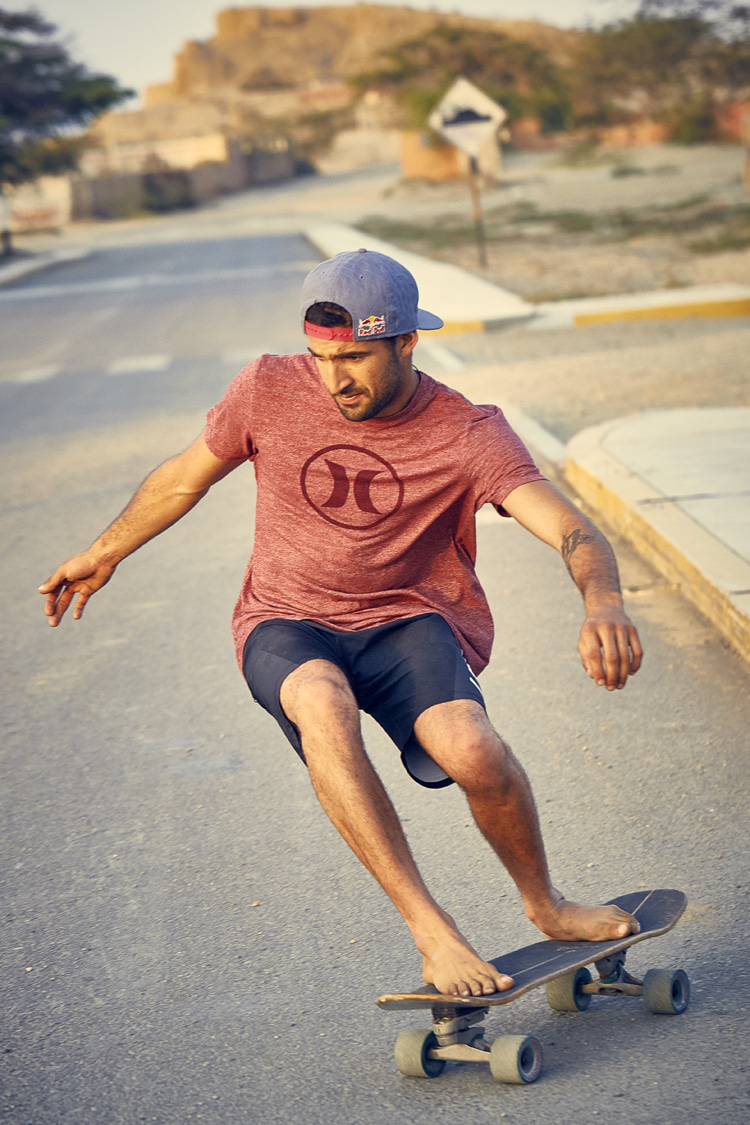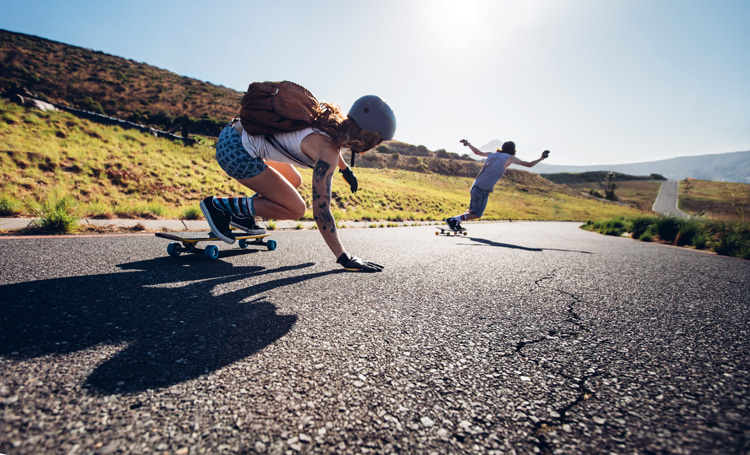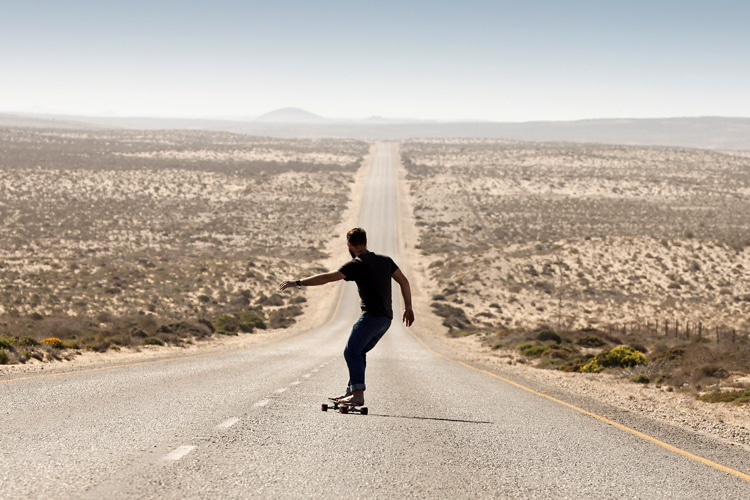The simplest way to turn on a skateboard is by leaning on your toes and heels. Here's how to carve or steer left and right.
There are several ways of changing direction when you're riding a skateboard.
The easiest method is turning by applying pressure on the skateboard edges/rails with your toes or heels.
In other words, what you'll do is put more weight on one side of the board or the other to control which direction we're going to turn.
It's a subtle yet highly effective weight move similar to the one used in surfing and snowboarding to draw lines on water and snow.
"Skateboards don't come with steering wheels," notes Per Welinder, author of the book "Mastering Skateboarding."
"You steer by changing your weight on the board until the wheels are pointed in the same direction as your body's momentum."
"When the board is pointed in a direction other than the one your body is traveling in, you need to align the two, or you will fall off."
Leaning on the toe side or heel side of your skateboard is the easiest way to turn. If you can already do it, you might want to try the kickturn and tic-tacs.
The kickturn, for instance, is the best way of quickly changing direction, especially when your board isn't moving or is moving very slowly.
Leaning the skateboard when you're traveling at a slow speed could be a bit difficult.
Nevertheless, the classic skateboarding turning technique is always helpful at any experience level.
If you're going down a steep street or mountain road, turning by leaning is almost always the only viable option.
You also lean to turn and carve across the flat smooth ground, a bowl, a ramp, a half-pipe, or any other rideable surface.

Turning on a Skateboard 101
Ready to perform flawless, smooth turns on a skateboard? Here's how to do it:
- Push on your skateboard at a moderate speed;
- Make sure your back foot is with the toes going straight off, and your front foot is slightly angled, both over the back and front bolts;
- Bend your knees and keep your weight on the balls of your feet while staying centered on the board;
- For a backside turn, lean toward the toe side of the board and shift your weight to the front side of the balls of your feet;
- For frontside turn, apply pressure on the heel side of the board, allow the shoulders to turn with the curve, and keep the knees bent;
- In both cases, allow the body to turn a little into the turn;
- Try to maintain a balanced weight distribution between your front foot and back foot;
- Perform a few "S" turns by alternating between turning left and right;
- The more pressure you apply on your toes and heels, the sharper the turn you'll get;
- Practice your first wide carving turns with cones or other harmless obstacles;

Extra Tip
Riding a skateboard through a turn might be easier or harder, depending on the tightness of the kingpin on the trucks.
The looser your trucks are, the quicker and easier it will be for you to turn.
However, too much looseness makes a skateboard hard to ride or even unrideable.
Each skater has their own tightness level preference - it's up to you to fine-tune and find the ideal balance for your riding style.
